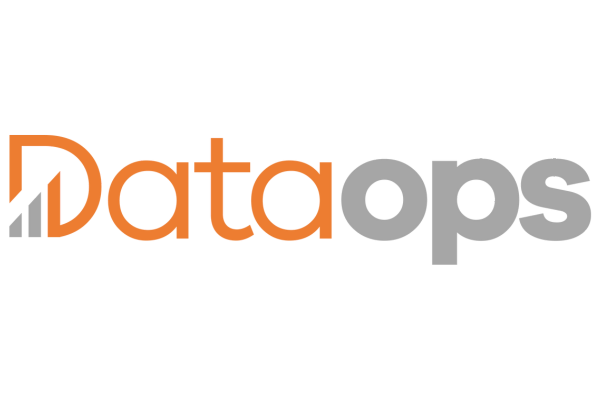How Modern Data Architectures Map to Higher-Value KPIs
- DataOps

- Nov 4
- 3 min read
Updated: Nov 17
At DataOps, our ambition is to make data not merely available but purpose-built: domain-aligned, productized, and KPI-driven. Modern data architectures such as domain-oriented data products, data fabrics/lakehouses, AI/metadata powered semantic layers, and embedded observability are transforming how organizations define, measure, and trust their KPIs.
Domain-Oriented Data Products as KPI Foundations
Traditional monolithic data lakes or centralized warehouses may consolidate data, but they often fail to reflect the nuance of individual business domains. Modern architectures instead promote domain ownership where each domain (e.g. Sales, Customer, Finance) owns its data product. When data products are aligned to domains, the KPIs derived from them (e.g. churn rate, average order value, cost per acquisition) inherit domain context, lineage, and trust.
A “data product” is more than a dataset: it carries embedded metadata, quality rules, access policies, and lineage. In a domain model, KPI flows become transparent: the domain team owns the full lifecycle of the data product that drives its key metric. This alignment ensures that the data feeding KPIs is contextually accurate, governed, and fresh.
Autonomy and Local Ownership: Enhancing KPI Reliability
Beyond domain alignment, the architectural ideal is autonomous data products: self-managing services that encapsulate ingestion, transformation, quality enforcement, observability, and policy enforcement. This pushes responsibility close to domain teams, minimizing dependencies on a centralized data team.
For KPIs, autonomy yields stronger reliability: real-time updates, transparent lineage, traceable anomalies, and local accountability. If a KPI begins to drift, domain teams can investigate upstream in their own data product, without “black box” handoffs.
Unified Storage & Fabric / Lakehouse: Flexibility + Governance
Modern platforms increasingly adopt hybrid fabric/lakehouse architectures, combining flexibility, scale, and performance. IBM’s watsonx.data exemplifies this: it merges data fabric principles (automated governance, unified metadata, hybrid access) with lakehouse capabilities to deliver AI-ready, governed data zones.
A data fabric approach unifies data access across on-premises and multi-cloud systems without forcing wholesale movement of data. It automates governance, metadata management, and integration pipelines.
For KPI support, this unified layer ensures that strategic dashboards, exploratory analytics, and operational reporting all tap into the same governed foundation. There’s no divergence between systems or silos. You improve KPIs like freshness, latency, consistency, all at once.
Semantic Layer: One Metric Definition Across the Enterprise
One of the most powerful yet under-appreciated architectural elements is the semantic layer. IBM describes it as a metadata and abstraction layer built on top of source systems to accelerate data access and make analytics more intelligible to business users.
The semantic layer becomes the canonical metric layer: “Revenue,” “Active Users,” “Defect Rate,” all defined once, versioned, and governed. When every BI tool or dashboard accesses metrics through that consistent interface, you eliminate metric drift, misinterpretation, and data distrust.
IBM’s watsonx BI illustrates how this works: it maintains a metrics catalog (semantic layer) that connects business concepts to raw data, ensuring consistent interpretations across users and tools.
In effect, the semantic layer stitches domains together: each domain publishes its “certified” metrics and definitions. Any higher-level KPI that combines cross-domain metrics still draws from the same layer, preserving consistency and traceability.
Observability & Governance: KPI Integrity Built In
Modern data systems must bake in observability and governance so that KPIs are not just measured but trusted. This means instrumentation across pipelines, metadata-driven monitoring, anomaly detection, lineage tracking, and policy enforcement from ingestion through consumption.
Observability ensures that if a KPI unexpectedly shifts, you can trace upstream to the exact data product, transformation, or ingestion pipeline responsible. That kind of root cause transparency is critical for confidence in KPIs and for corrective response.
Actionable Steps to Embed KPI Value
Step | Action |
1. Define domain data products around KPIs | Organize domain teams to own specific KPIs and build data products that directly feed those metrics. |
2. Adopt autonomous data product design | Encapsulate ingestion, transformation, quality, policy, and observability within each domain’s product. |
3. Build and govern a semantic layer | Create a metrics catalog versioned and controlled, ensuring a single source of truth for KPI definitions. |
4. Bake observability into pipelines | Instrument every stage with lineage, monitoring, and alerting tied to KPI health and integrity. |
The DataOps Perspective
Modern data architectures centered on domain-aligned data products, autonomy, unified fabric/lakehouse foundations, semantic governance, and embedded observability represent more than technical modernization. They are essential enablers of KPIs you can trust, act on, and scale.
At DataOps, our philosophy is clear: design your data systems so they reflect business domains, enforce metric consistency, and protect KPI rigor end to end. Organizations that embrace this architecture don’t just report what happened, they orchestrate what comes next with confidence.
If you’d like help defining domain data products, shaping your metrics layer, or instrumenting KPI observability, let’s connect. Let’s turn your data architecture into an outcome engine.



